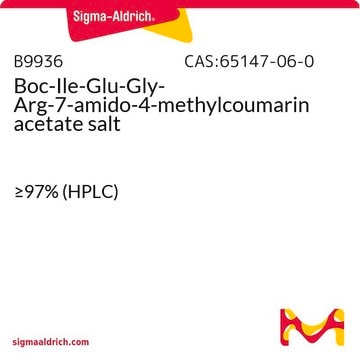SML0083
GSK 1059615 sodium salt hydrate
Synonyme(s) :
(5Z)-5-[[4-(4-pyridinyl)-6-quinolinyl]methylene]-2,4-thiazolidinedione sodium salt hydrate
About This Item
Produits recommandés
Forme
powder
Couleur
yellow
Solubilité
H2O: ≥8 mg/mL
Auteur
GlaxoSmithKline
Température de stockage
2-8°C
Chaîne SMILES
O.[Na+].O=C1[N-]C(=O)C(\S1)=C\c2ccc3nccc(-c4ccncc4)c3c2
InChI
1S/C18H11N3O2S.Na.H2O/c22-17-16(24-18(23)21-17)10-11-1-2-15-14(9-11)13(5-8-20-15)12-3-6-19-7-4-12;;/h1-10H,(H,21,22,23);;1H2/q;+1;/p-1/b16-10-;;
Clé InChI
KKSRFFGUIONCPS-FLPKAINGSA-M
Actions biochimiques/physiologiques
Caractéristiques et avantages
Clause de non-responsabilité
Code de la classe de stockage
11 - Combustible Solids
Classe de danger pour l'eau (WGK)
WGK 3
Point d'éclair (°F)
Not applicable
Point d'éclair (°C)
Not applicable
Certificats d'analyse (COA)
Recherchez un Certificats d'analyse (COA) en saisissant le numéro de lot du produit. Les numéros de lot figurent sur l'étiquette du produit après les mots "Lot" ou "Batch".
Déjà en possession de ce produit ?
Retrouvez la documentation relative aux produits que vous avez récemment achetés dans la Bibliothèque de documents.
Articles
Discover Bioactive Small Molecules for Kinase Phosphatase Biology
Notre équipe de scientifiques dispose d'une expérience dans tous les secteurs de la recherche, notamment en sciences de la vie, science des matériaux, synthèse chimique, chromatographie, analyse et dans de nombreux autres domaines..
Contacter notre Service technique






